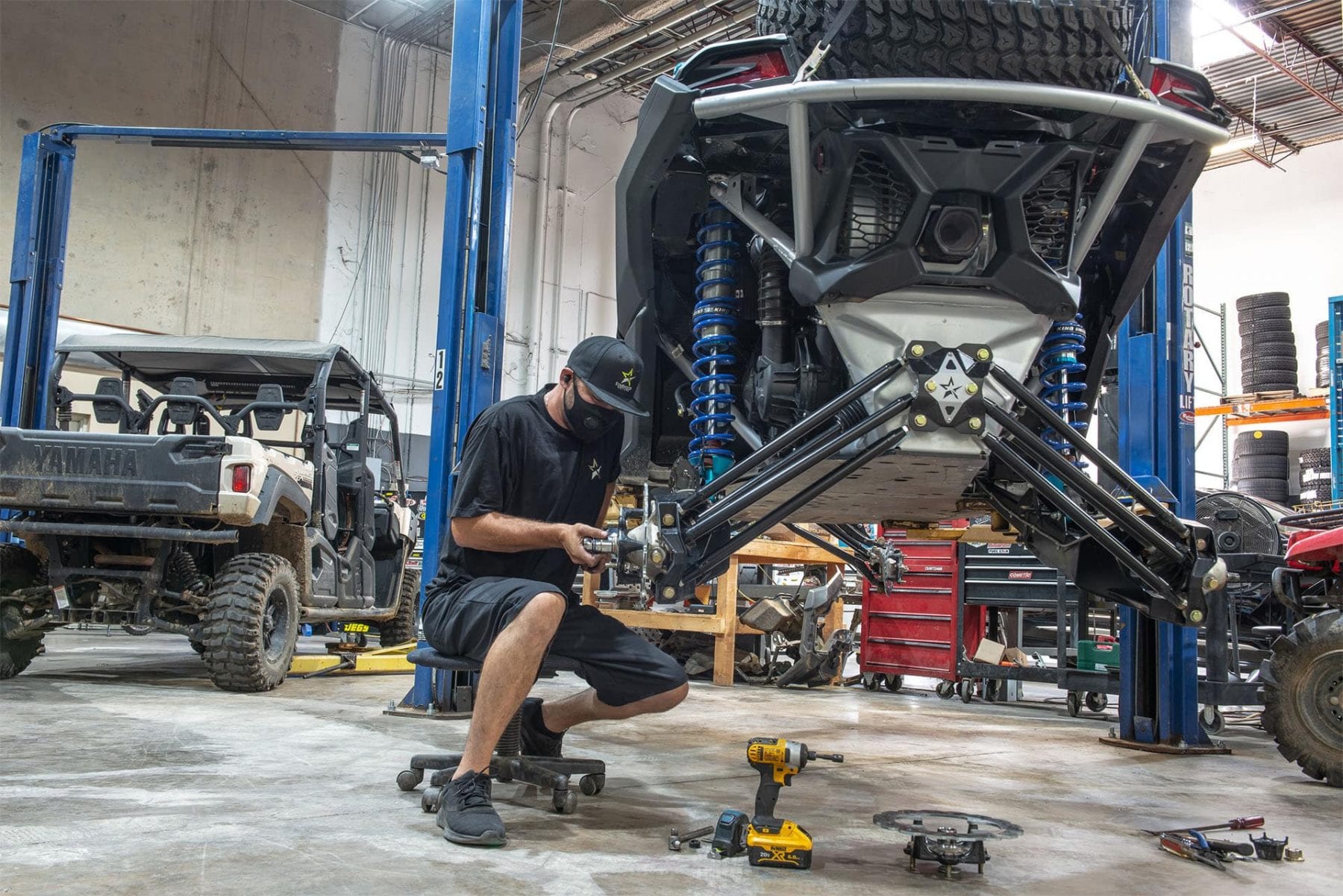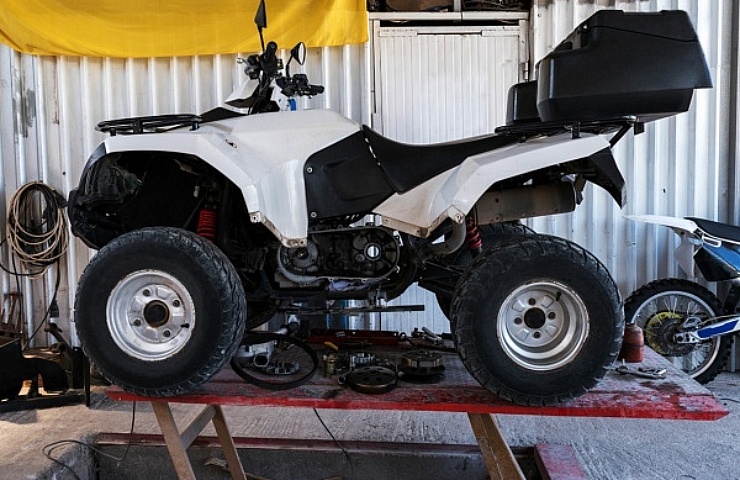Unlocking the Thrills: Understanding ATV Riding Techniques for Beginners
Unlocking the Thrills: Understanding ATV Riding Techniques for Beginners
Blog Article
ATV Riding Strategies: Grasping the Art of Off-Roading

Body Positioning
To successfully navigate with challenging off-road terrain, it is crucial for ATV cyclists to constantly maintain appropriate body placing. Maintaining the proper body position while riding an ATV not just boosts control and stability yet also makes certain the motorcyclist's security. By taking on the appropriate body placing techniques, motorcyclists can properly distribute their weight, enhance their equilibrium, and minimize the danger of crashes or injuries.
One secret element of correct body placing is maintaining the feet on the foot fixes. Placing the feet on the foot pegs allows the motorcyclist to preserve security and control over the ATV. The cyclist's knees should be slightly bent, supplying a mild suspension to soak up shocks and keep equilibrium. In addition, the rider's upper body should stay loosened up and versatile, enabling for seamless and quick motions when essential. This consists of keeping a light hold on the handlebars to keep control without too much force.
In addition, the cyclist's eyes need to constantly be concentrated ahead, scanning the terrain and preparing for any challenges or modifications in the trail. By keeping an onward look, cyclists can make split-second decisions and respond properly to challenging surface.
Throttle Control
Building upon the significance of proper body placing for ATV bikers, mastering throttle control is an essential ability that allows riders to properly navigate with numerous off-road terrains. Strangle control refers to the capacity to control the quantity of power provided to the ATV's engine. By understanding just how to manipulate the throttle, cyclists can make certain a smooth and controlled acceleration, permitting them to navigate obstacles with accuracy.
One of the fundamental facets of throttle control is discovering to regulate the throttle smoothly. Abrupt or jerky movements can trigger the ATV to shed traction or come to be unstable, making it tough to maintain control. Instead, cyclists should go for purposeful and progressive throttle inputs, especially when passing through difficult terrains. This method enables the ATV to preserve a steady speed and offers far better grip, lowering the danger of mishaps.
Along with smooth modulation, motorcyclists need to also find out how to stabilize the throttle with various other riding methods, such as body positioning and braking. When climbing steep hills, riders need to apply adequate throttle to maintain momentum without causing or subduing the atv wheel spin. When coming down steep slopes, riders should make use of the throttle in mix with appropriate body placing and braking to keep control and stop the ATV from moving or tipping over.

Braking Techniques
A crucial facet of ATV riding methods is mastering reliable stopping techniques. When it comes to off-roading, knowing just how to brake effectively can make a substantial difference in your safety and security and control over the vehicle. Among the most essential braking strategies is using the front brake even more than the back brake. The front brake gives the majority of the stopping power, so it is important to utilize it deliberately. It is vital to keep in mind that harsh braking with only the front brake can trigger the ATV to pitch onward, potentially leading to loss of control or even flipping over. Therefore, it is suggested to apply both brakes all at once, but with even more stress on the front brake. One more essential technique is to avoid locking the wheels while braking. Securing the wheels can cause skidding, making it hard to keep control. To avoid this, squeeze the brake bars gradually and release them a little if you really feel the wheels locking. By understanding these stopping methods, you can enhance your ATV riding abilities and make certain a secure and satisfying off-roading experience.
Cornering Strategies
One crucial aspect of understanding ATV riding methods is understanding efficient cornering strategies. Cornering look here on an ATV my response can be tough, but with the ideal strategies, motorcyclists can browse turns safely and effectively. The trick to successful cornering is to keep control of the ATV while making best use of grip and decreasing the danger of toppling.
To execute an appropriate cornering strategy, cyclists ought to come close to the turn at an ideal speed, ensuring they are not going as well slow-moving or too fast. It is critical to shift the body weight in the direction of the within the turn, leaning into it to maintain equilibrium and security. This assists for the centrifugal force and maintains the ATV upright.
Additionally, motorcyclists should maintain their eyes concentrated on the leave point of the turn rather than the immediate path ahead (ATV). This enables smoother and a lot more specific guiding, as it helps the biker expect any type of challenges or adjustments in terrain
Moreover, proper throttle control plays a substantial role in cornering. Motorcyclists must modulate the throttle efficiently, avoiding unexpected velocities or slowdowns, which can trigger loss of control.
Uphill and Downhill Riding
When browsing off-road surface, ATV bikers this contact form must master the methods for uphill and downhill riding to preserve control and make sure safety. Downhill riding, on the other hand, requires bikers to lean back and move their weight in the direction of the rear of the ATV. By mastering the strategies for uphill and downhill riding, ATV bikers can with confidence take on various off-road surfaces and appreciate a safe and thrilling adventure.
Final Thought
To conclude, mastering the art of ATV riding needs a mix of body positioning, throttle control, stopping strategies, and effective cornering. Uphill and downhill riding likewise call for specific skills to browse securely. By carrying out these techniques, cyclists can enhance their off-roading experience and improve their general control and safety and security on the ATV.
ATV Riding Techniques: Understanding the Art of Off-Roading is a comprehensive overview that delves into the complexities of grasping the skills needed for off-road ATV riding. Whether you are a newbie or an experienced rider, ATV Riding Techniques: Mastering the Art of Off-Roading offers vital recommendations to assist raise your off-road ATV riding abilities to the following degree.

Report this page